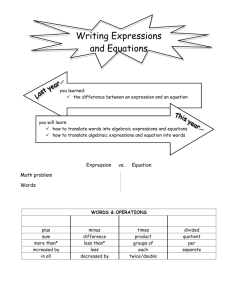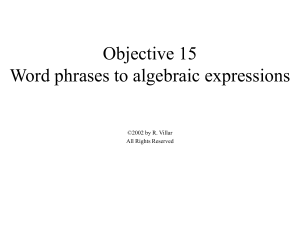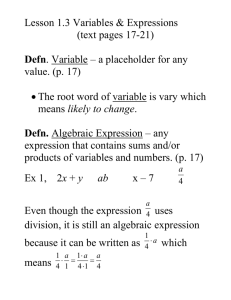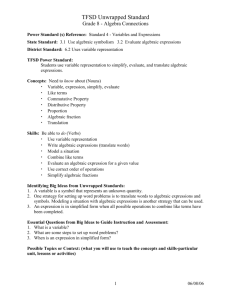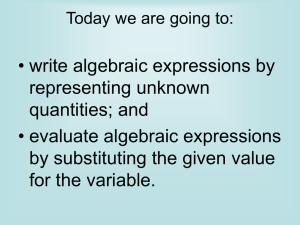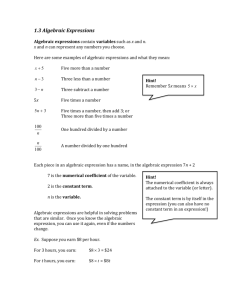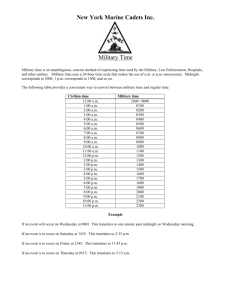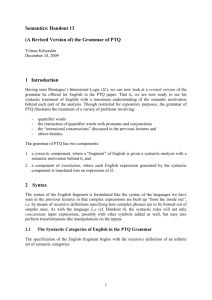ALGEBRAIC EXPRESSIONS
advertisement
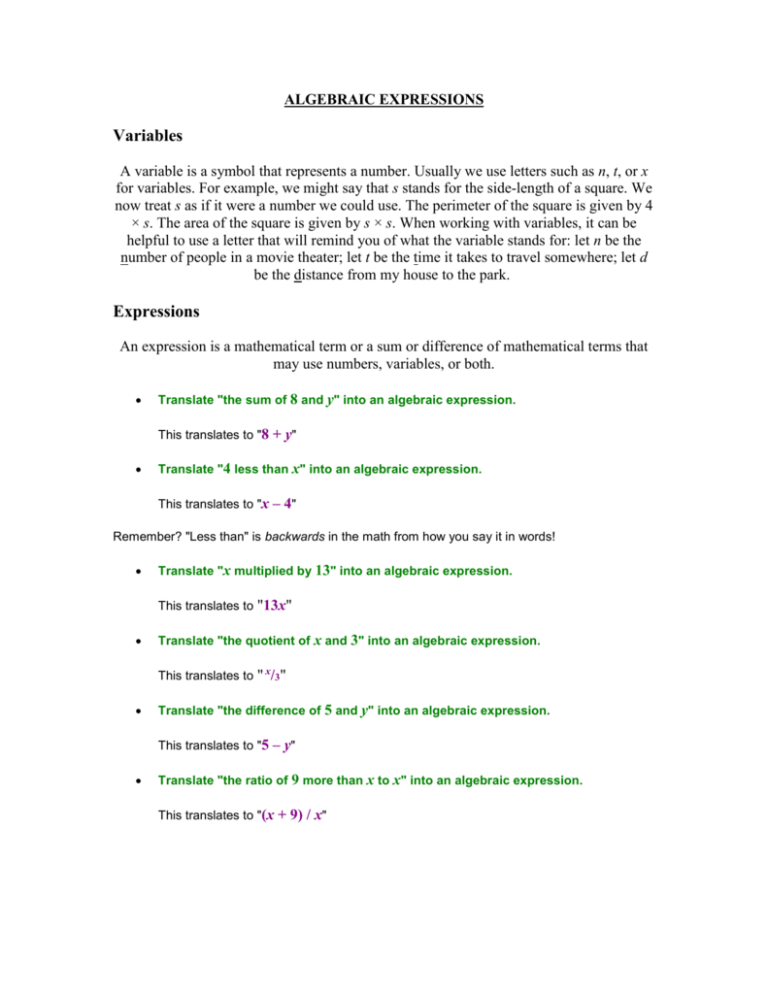
ALGEBRAIC EXPRESSIONS Variables A variable is a symbol that represents a number. Usually we use letters such as n, t, or x for variables. For example, we might say that s stands for the side-length of a square. We now treat s as if it were a number we could use. The perimeter of the square is given by 4 × s. The area of the square is given by s × s. When working with variables, it can be helpful to use a letter that will remind you of what the variable stands for: let n be the number of people in a movie theater; let t be the time it takes to travel somewhere; let d be the distance from my house to the park. Expressions An expression is a mathematical term or a sum or difference of mathematical terms that may use numbers, variables, or both. Translate "the sum of 8 and y" into an algebraic expression. This translates to "8 + y" Translate "4 less than x" into an algebraic expression. This translates to "x – 4" Remember? "Less than" is backwards in the math from how you say it in words! Translate "x multiplied by 13" into an algebraic expression. This translates to "13x" Translate "the quotient of x and 3" into an algebraic expression. This translates to " x/3" Translate "the difference of 5 and y" into an algebraic expression. This translates to "5 – y" Translate "the ratio of 9 more than x to x" into an algebraic expression. This translates to "(x + 9) / x"
